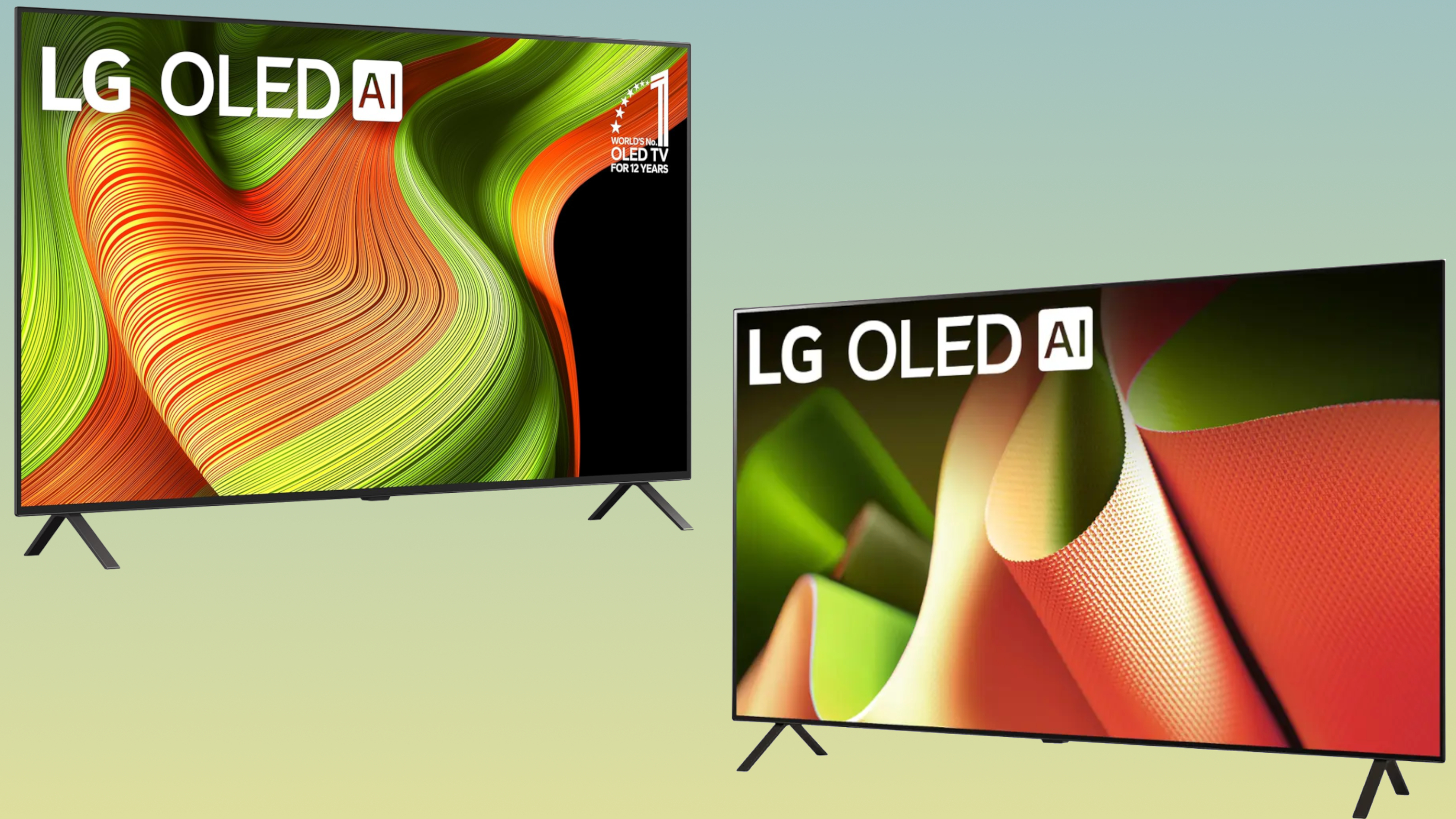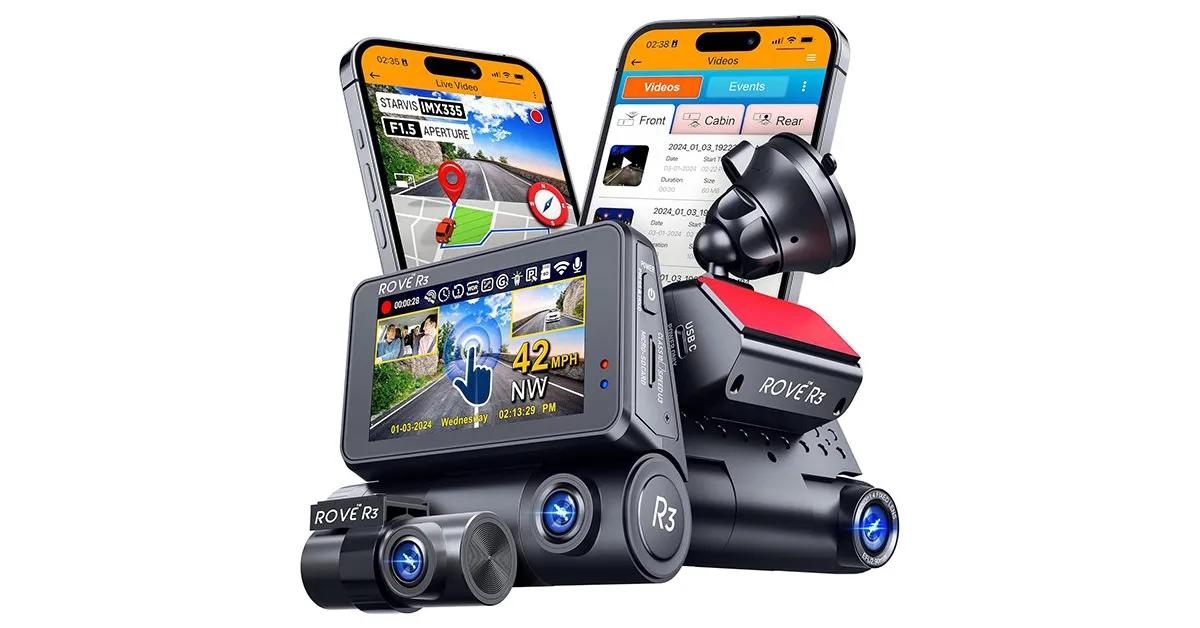
Right now, most people shopping for a TV are doing two things: researching the best TVs and comparing this year’s models to cheaper TVs that debuted last year.
It’s true: A good way to earn yourself a doubly deep discount is to shop for budget-friendly TVs that have been available for a year. This is what makes the LG B4 OLED such a tantalizing choice. It was already one of LG’s most affordable OLED TVs, but because it launched in 2024, its price has plummeted.
The choice gets trickier when you factor in the all-new LG B5 OLED. As the name implies, this is the successor to last year’s B4. It’s still an entry-level LG OLED, but because it’s new, you probably won’t find it for as low a price as the B4. With this in mind, let’s take a look at both B Series OLEDs side by side and determine which is the better pick.
LG B4 vs LG B5: specs compared
When it comes to specs, this pair of modestly equipped OLED TVs are almost identical. They’re available in the same size options, support the same HDR formats and run similar versions of LG’s webOS smart platform.
Unsurprisingly, the B5 arrives with an updated processor, but I wouldn’t concern yourself too much with this point. I’ve seen these two TVs up close, and I don’t think their respective processors make much of a difference when viewing everyday content.
LG B4 vs LG B5: design
Pictured above is the back of the LG B4’s panel. From this angle, you can get a good look at the TV’s pair of wide-set, boomerang-shaped feet. It’s a slim TV (which is to be expected, given the panel technology), but folks who are familiar with LG’s higher-end OLED TVs will clock the B4’s more basic approach to materials and build quality.
Now, let’s take a closer look at the newer B5 to see how its design compares to last year’s B Series.
The B5 (pictured above) features a similar set of feet, but I’m happy to report that LG has really made an effort to zhuzh up the overall look and feel of its most affordable OLED TV.
Most notably, the B5 borrows the marble-like appearance LG has been outfitting its C Series OLEDs with for a few years now. The rear side of a TV isn’t the most important area of design for reasons that are quite obvious, but I do appreciate the refresh.
The B5 also arrives with an updated version of LG’s remote control. It still features the same motion-activated, Wii-like controls you’ll find on the Magic Remotes of the past, but this year’s design is slimmer and features fewer buttons.
All told, the B4 and the B5 are as similar on the outside as they are on the inside. The B5’s glow up (and its slimmed-down remote) are more my speed, but I’d understand if folks disagree.
The edge here goes to the B5, but I encourage you to weigh this category as you see fit. The B5’s fancier-looking panel and smaller remote are relatively low on a list of determining factors.
Winner: LG B5
LG B4 vs LG B5: performance
Before we dive into which of these OLED TVs is the better performer, let’s compare their test results.
I’ll be perfectly honest: There’s not much here for me to break down. As you can see, these two OLED TVs are remarkably similar performers.
According to our test results, the B4 and the B5 offer close to the same level of highlight brightness across both SDR and HDR content. Similarly, they both cover about 75% to 76% of the Rec. 2020 color gamut.
I’m happy to report that LG’s latest entry-level OLEDs arrive with stunning out-of-the-box color accuracy in Filmmaker mode. (As an aside, this is one of the reasons I’ve been recommending these sets to folks who value reference accuracy but who’d rather not shell out for a top-shelf TV.)
Most importantly, because of the built-in benefits of OLED technology, both the B4 and the B5 deliver perfect black levels, pixel-level dimming and wider viewing angles than you’ll find on most similarly priced LED-based TVs.
I love both of these TVs because they open the door to OLED-driven performance for more budget-conscious shoppers, but I will admit that I might not be able to tell the difference between the two in a blind, side-by-side comparison.
Some HDR content might look slightly brighter or better on the B5 as a result of its newer, updated processor, but I can’t say there’s a meaningful enough difference in picture quality to crown a winner in this category.
Winner: Draw
LG B4 vs LG B5: smart platform and features
These TVs are built around LG’s webOS smart platform, and while they each arrive with their own version of webOS out of the box, you’d be hard-pressed to tell them apart.
Compared to the snappy, thoughtfully arranged interface of Google TV and the straightforward, easy-to-use nature of Roku, webOS leaves me feeling a bit cold. However, if all you need is a reliable way to access Netflix, HBO Max and other popular streaming apps, webOS will get the job done. It’s inundated with sponsored content, but that’s kind of par for the course these days.
And — while I assume you’re tired of me saying this — the B4 and B5 are pretty much the same TV when it comes to extra features, too. You’re getting four HDMI 2.1 inputs regardless of which one you choose, and both TVs top out at 4K/120Hz support. This is plenty good for current-generation consoles.
Auto Low Latency Mode (ALLM), Variable Refresh Rate (VRR) and LG’s Game Optimizer mode are along for the ride, and both sets support Dolby Vision, the most popular enhanced HDR format.
These aren’t as packed to the gills with features as higher-end, flagship-level OLEDs, but for their price, you’re getting plenty of bells and whistles.
Winner: Draw
LG B4 vs LG B5: verdict
I can’t say with confidence that the LG B5 is a big enough improvement over the B4 that you ought to prioritize it over its predecessor. However, I can say that the B5 is pricier.
Right now, the 55-inch LG B5 is $1,196 at Amazon. Meanwhile, the 55-inch version of the LG B4 is $1,099 at Best Buy.
A difference of one hundred bucks might not be that much in the grand scheme of things, but check this out: If you opt for a bigger size, the 65-inch LG B4 is also $1,099 at Best Buy. This makes the 65-inch B4 a full $200 less than the 65-inch version of the newer B5.
Ultimately, I don’t blame you if you decide to get the newer version of a TV that hasn’t changed much year over year. After all, new stuff is cool. But, if you’re interested in saving a bit of cash, I highly recommend taking a closer look at the B4 before its stock runs out.
More from Tom’s Guide



